As part of the “Gaming Flashback” series, this article will tell the story of the second generation of gaming consoles.
In the last chapter, we explained how Ralph Baer got the idea of an interactive TV. Later, his design gave birth to a new economic model, leading to many investments in the video games industry.
That was just the beginning of the tale. Now that we know how it all started, let’s see what were the events that followed.

The cartridges of Fairchild Channel F
The second generation was inaugurated with the arrival of the Fairchild Channel F in 1976. It was manufactured by Fairchild Semiconductor
This console brought two major technological innovations: It was the world’s first CPU-based video game console and it introduced the cartridge system.
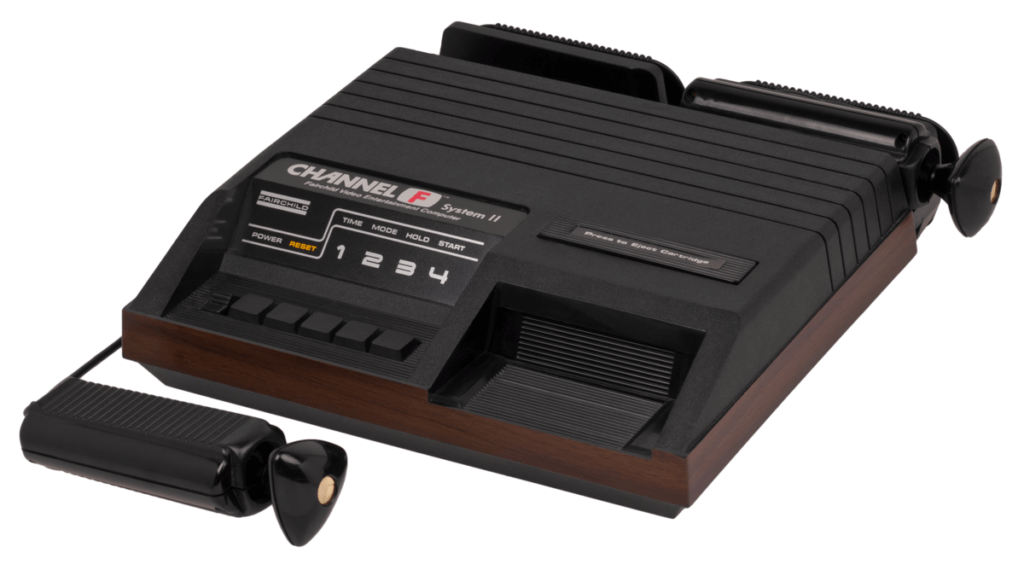
The cartridge-based game code storage format was invented by Jerry Lawson, the electronic and computer engineer behind the Fairchild Channel F conception.
Although it came with 2 pre-installed games (Tennis and Hockey), twenty-six cartridges were available for the Fairchild, each one having four games on it.
Fairchild Channel F shipped with 2 joystick controllers, that allowed the player to move in eight directions. The controllers were initially hardwired to the console before evolving to detachable ones in later releases.
But despite its technological arsenal, the Fairchild only sold 250,000 units.
The game changer: Atari VCS (AKA Atari 2600)
In September 1977, Atari released the “Atari 2600”. At the time, it was named Atari Video Computer System (VCS). It was also a CPU-based console, supporting cartridges as inspired by Fairchild Channel F.
Atari package contained 3 types of controllers: A “classic” joystick, a rotary paddle and a driving controller (a paddle that can rotate continuously in each direction).
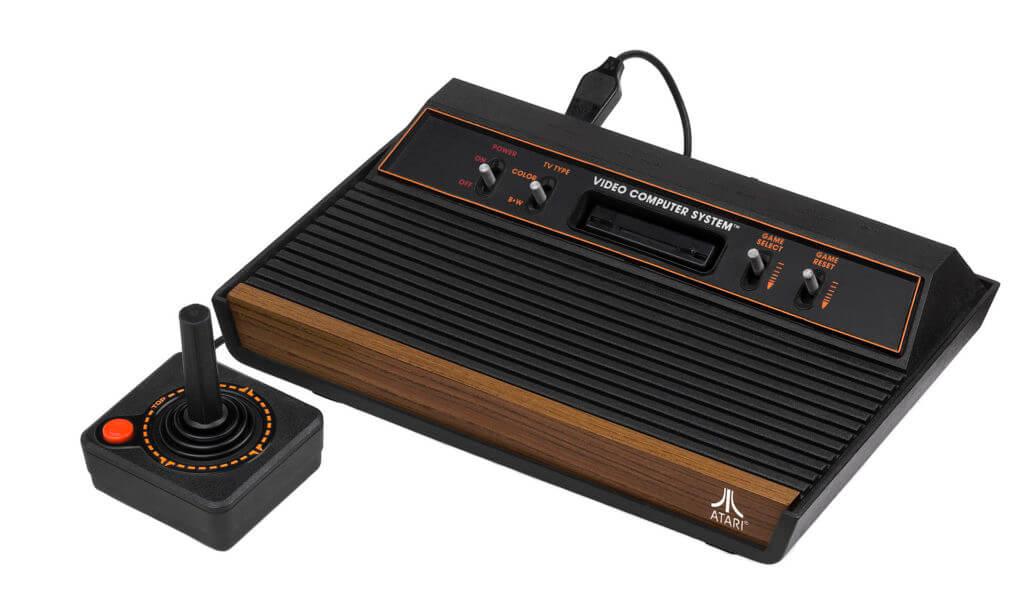
This console holds the identity of the second generation, as it sold about 400,000 units the year of its release, which surpasses the Fairchild lifetimes’ sales.
Even with that number, the VCS hadn’t attained yet the ambitions of “Atari, Inc.” and its sales were seen as slow.
The next year, Atari switched their marketing model to the “killer application” approach, managing to negotiate exclusivity on the top games. When Atari licensed “Space Invaders” by Taito, it secured itself a ticket on the high sales train. Thanks to that game, Atari sold 2 million units in the year 1980.
Other successful games followed, especially the yellow ghost hunter “Pac-man”, that sold more than seven million cartridges, and “E.T. the Extra-Terrestrial” that was based on the film of the same name.
By the end, Atari VCS sold 30 million units
Other contenders
Since this article is not about technical details, we’ll talk briefly about other consoles of the same era. To spare repeating, all of them are CPU-based and support cartridges.
First, Magnavox Odyssey². It made more sales than its predecessor, that shares the same name. Odyssey² sold 2 million units and was the last console to hold that name.
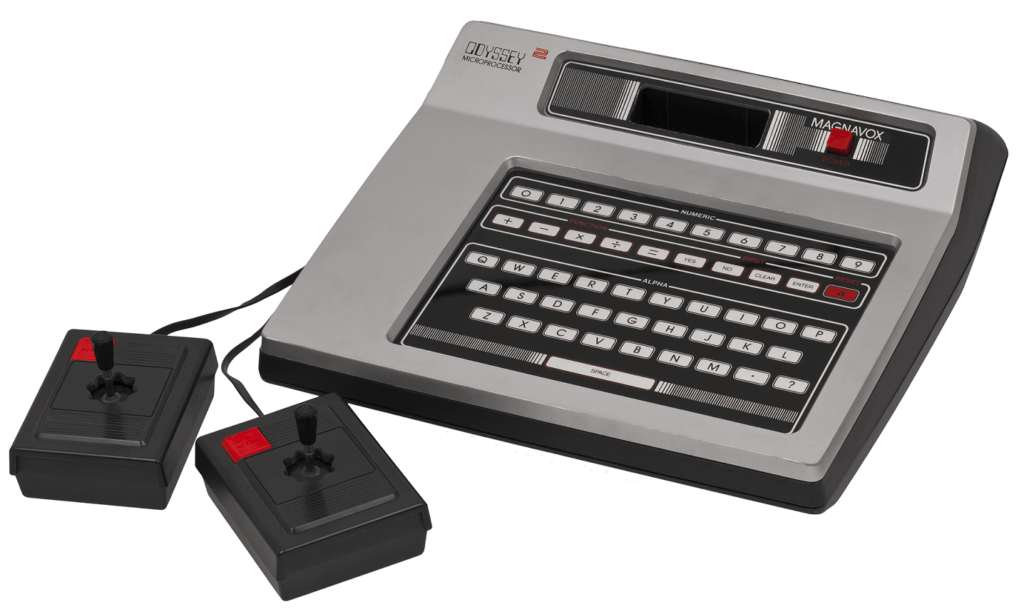
Then, there was Intellivision, from Mattel, that scored 3 million sales. It had many components that were sold separately. The best-seller was the keyboard, that came with an additional processor, making the Intellivision a dual processor home computer.
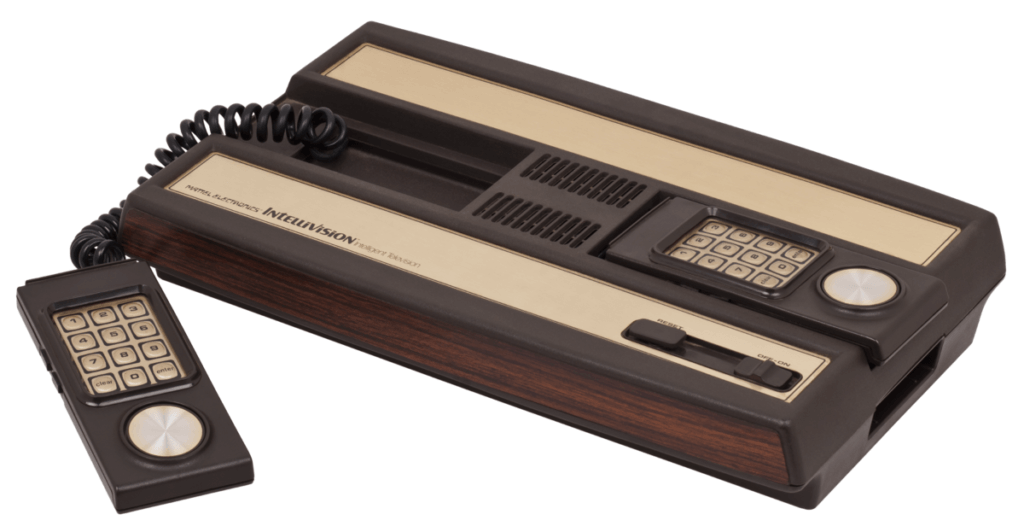
The video-game crash
The year 1983 knew a video-game economic collapse, known as the video-game crash or, as called in Japan, the Atari shock.
Many factors caused that crash, but primarily, it related to the success of Atari VCS/2600. Simply, the market was saturated with consoles, many manufacturers and many options. As a result, it became very difficult to find someone who would buy a video-game console and doesn’t already own one.
And it wasn’t just about console saturation, but it was also about video games. Manufacturers and third-party developers flooded the market with a huge amount of games, which highly exceeded the market’s need.
Another factor is the rise of home computers, lead by Apple at the time. Computers also supported video-games, along with other features, which convince the public that they’re worth their price more than consoles.

After the video-game crash, console industry needed a huge push to resurrect. The tall shall continue in other articles to follow!





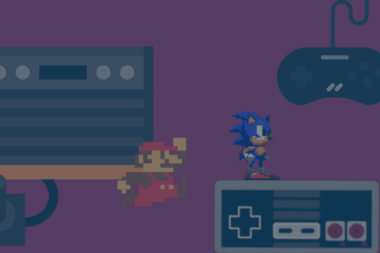

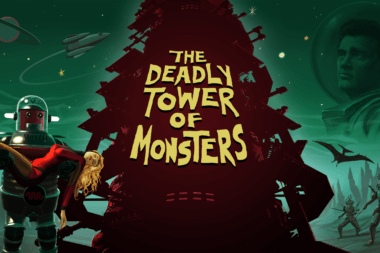










Leave a Reply